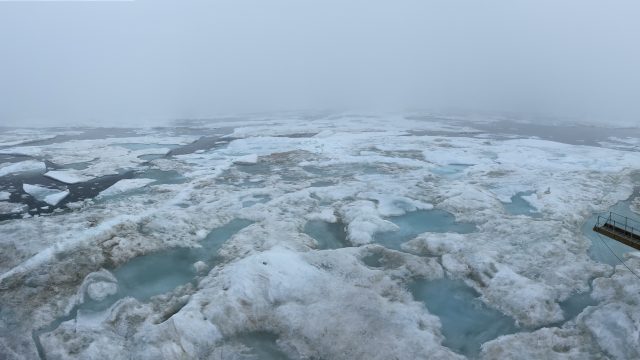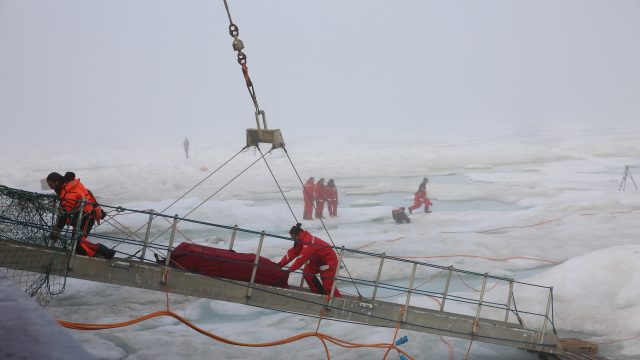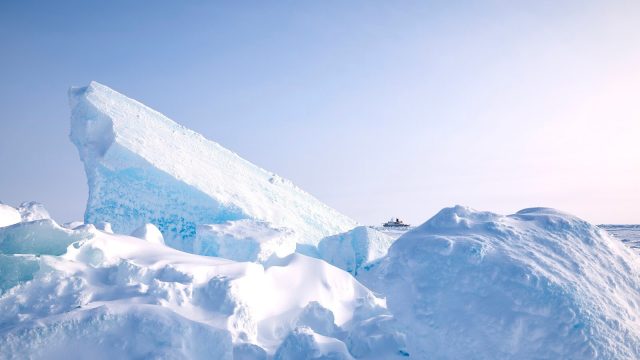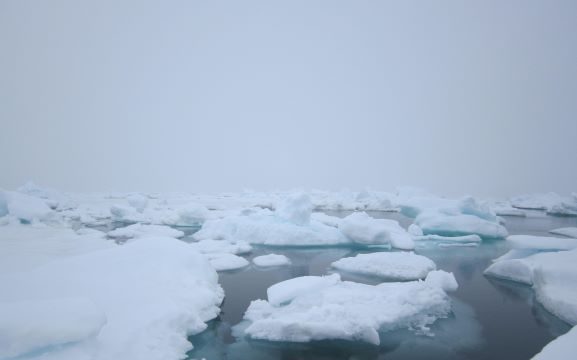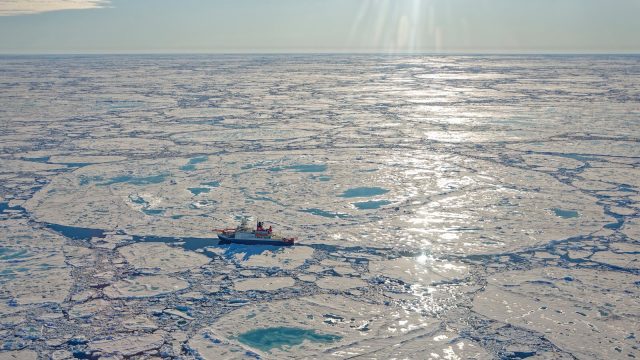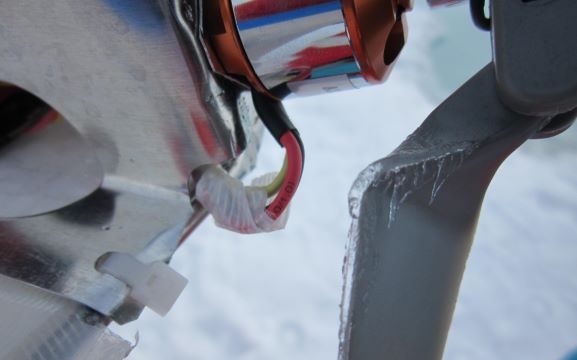by Matthew Shupe, CIRES/NOAA scientist and co-coordinator of MOSAiC Kaput is the right word for the moment. A German word that we’ve also adopted in American English. And entirely descriptive of our floe this morning. Waking as usual at 06:50am to head up for our bridge meeting at 07:00 am. I typically enter the bridge,… Read More
by Matthew Shupe, CIRES/NOAA scientist and co-coordinator of MOSAiC All along we have known that once there was swell in the area, the floe could fall apart at any time. We tried to imagine how far we would be from the ice edge when we could actually feel the swell. Is it 50 nautical miles… Read More
by Matthew Shupe, CIRES/NOAA scientist and co-coordinator of MOSAiC Yesterday the decision was made to start taking down the major infrastructures on the ice. The ice edge is now about 10 nautical miles away and we drifted about 7 nautical miles over the previous day. At this point, any major swell could totally destroy our… Read More
by Matthew Shupe, CIRES/NOAA scientist and co-coordinator of MOSAiC Captain Wunderlich asked if he could join me on the ice today… perhaps to get some fresh air. So he joined Jackson Osborn and me on our daily walk-about around to our different stations. I decided to show him some of the other great areas on… Read More
by Matthew Shupe, CIRES/NOAA scientist and co-coordinator of MOSAiC We are just spinning in circles around here. Around and around. Our floe just keeps on turning. Over the many days that we’ve been here the orientation of our floe didn’t change much, the ship having a robust SW heading. But in the last two days… Read More
by Matthew Shupe, CIRES/NOAA scientist and co-coordinator of MOSAiC I’ve done the Transect a couple of times now. It’s basically a walk that meanders along the edge of the floe, all the way around in the counterclockwise direction. Along the way there are two kinds of measurements: The magnaprobe and the GEM. I’ve done both… Read More
by Radiance Calmer, a CIRES postdoctoral researcher It’s already 2 pm. The ceiling is low, and we are flying with the Datahawk – hoping to still get valuable measurements of the boundary layer. The visibility is not great with the fog around, and despite all the colorful tape that Jonathan has stuck on the aircraft,… Read More
by Matthew Shupe, CIRES/NOAA scientist and co-coordinator of MOSAiC I like clouds. I’m here, in part, to study clouds. And there is certainly no shortage of clouds in this area or in the Arctic summer in general. Fogs, overcast, grey…. These things abound. But occasionally out here you get one of these spectacular clear sky… Read More
by Radiance Calmer, a CIRES postdoctoral researcher If you think about the weather in the Arctic and the previous MOSAiC legs, you might describe the extreme temperatures, -30°C, and strong winds during storms. The current conditions during Leg 4 are very different! We are fully in the melting season; temperatures are around -1 to +1… Read More
by Matthew Shupe, CIRES/NOAA scientist and co-coordinator of MOSAiC The GFS [a U.S. national weather model] is crushing it out here in the Arctic. In the past weeks we’ve had a couple of key operational days when the models diverged in their weather forecasts. Will it be socked in with overcast clouds and fog, or… Read More
